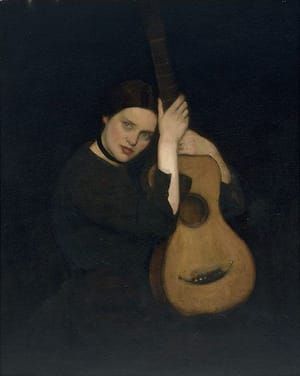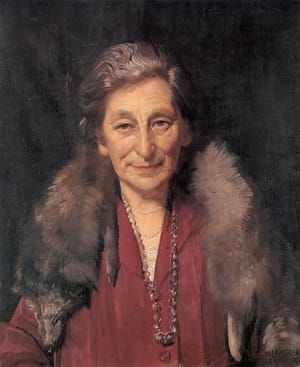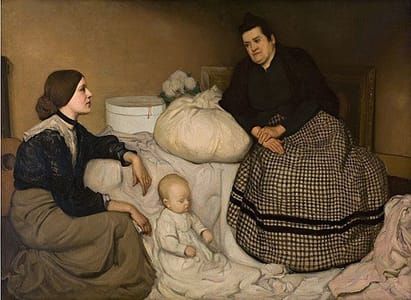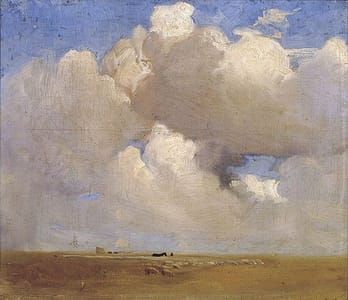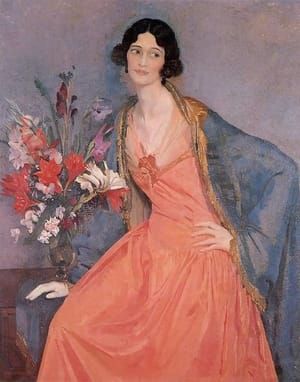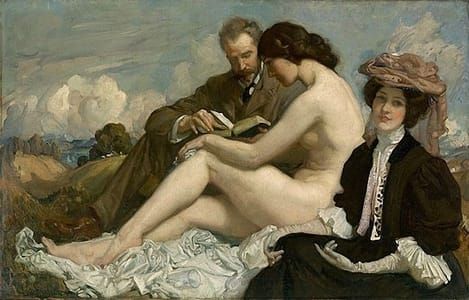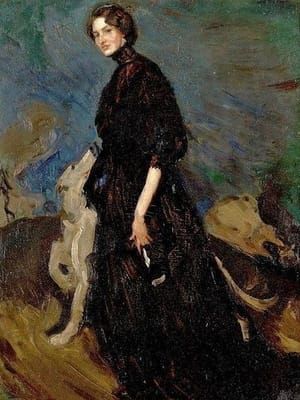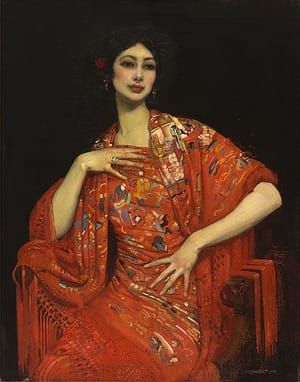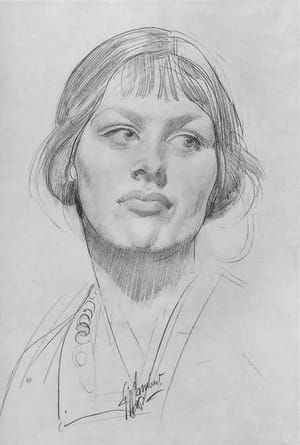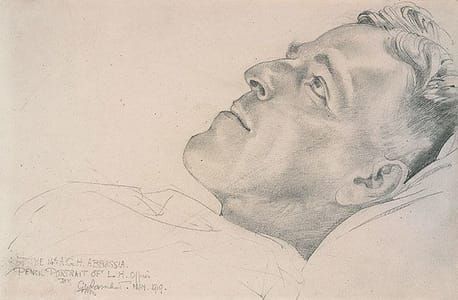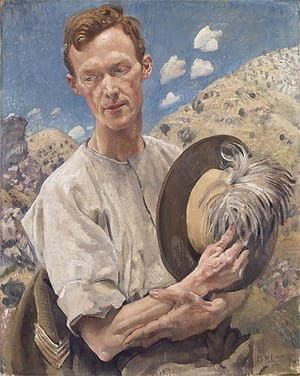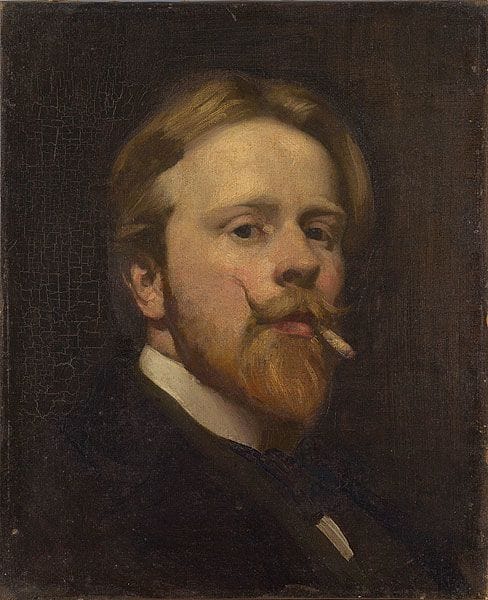

Self Portrait, 1906
George Washington Lambert
Lambert made many self portraits, of which this is one of the earliest and most austere. Here he adopted a spare composition and created an image that is convincing in its subtle modelling of the head. It became one of Lambert’s acknowledged successes and one of his favorite pictures.
Lambert based this head and shoulders portrait on Velázquez’s Philip IV of Spain, c.1656, which he was able to examine in detail in the National Gallery, London. As in Velázquez’s portrait of the king, Lambert depicted himself in a black suit with a white collar, and even included a twirled moustache in the manner of the regent’s. He painted it in the Spanish tradition, building up the portrait in lighter colors onto a dark brown ground.
In his monograph on Velázquez, which Lambert read, R.A.M. Stevenson suggested that in Velázquez’s portrait ‘the head, freed from distracting clamour of rival interests, alone occupies the eye and fixes the attention’, and that this allowed the artist to keep a tight grip on definitions and simplify the forms. This too can be said of Lambert’s portrait.
Contemporary critics admired Lambert’s portrait, but not the cigarette. The Times suggested on 15 January 1907 that it ‘would be excellent if he would only paint out the cigarette’. The critic for the Sydney Morning Herald suggested on 27 October 1910 that this portrait had an ‘almost startling suggestion of life in the smooth and placid young face’.
Lambert exhibited this work at the Modern Society of Portrait Painters, in London, in 1907 and later at the Guild Hall, Melbourne, in 1910. It was purchased in Melbourne by Professor Hugo Meyer, who subsequently developed one of the finest private collections of Lambert’s works, including The Shop, 1909, Holiday in Essex c.1910, Chesham Street, 1910 and Pan is Dead, 1911.
[https://nga.gov.au/exhibition/lambert/Detail.cfm?IRN=162558&ViewID=2]
Uploaded on Dec 10, 2017 by unknown user
Arthur
Wait what?

